Lenovo ThinkPad X1 Yoga 3rd Gen review – a robust industrial convertible

We have a very special laptop in our hands right now. It is called the Lenovo ThinkPad Yoga X1 and is the 3rd generation to get out on the market. As you may conclude from the name, it features some of the best distinctions of both the ThinkPad and the Yoga series. Obviously, it is not a cheap device and you should mind that it is strongly aimed at professionals.
Not only in the industrial segment, but this time – artists and creators in general. Obviously, it sports a touchscreen display, which comes with a Full HD option and two WQHD (2560×1440) options – one rated at 300 nits and one 500 nits Dolby Vision HDR display. In addition to that, the ThinkPad Yoga X1 is one of the few devices that have a stylus embedded in the body – more on that, later.
Now the ThinkPad stuff – it has a hardware shutter on the camera, optional IR face recognition, fingerprint reader and Fast Identity online certifications.
You can check the prices and configurations in our Specs System: https://laptopmedia.com/series/lenovo-thinkpad-x1-yoga-3rd-gen-2018/
Contents
Specs Sheet
Lenovo ThinkPad X1 Yoga 3 technical specifications table
What’s in the box?
We got a sample unit of this device, so we cannot give you an accurate representation of the box contents. However, we reckon that aside of the device, you’ll get a 65W USB Type-C charger, and mini Ethernet to RJ-45 pass through.
Design and construction
Lenovo ThinkPad Yoga X1 has retained the same design over the years, and this laptop is no exception from that. Its build materials include Carbon, Glass fiber and Magnesium alloy. This results in a 1.4 kg (3.1 lbs) weight of the convertible body and a profile of 17 mm. What is more interesting here is how the hinge works.
First of all, it is absolutely impossible to open the lid with a single hand. However, this has a reason – Lenovo has a little different approach to the way they cancel the keyboard inputs. Instead of a software cancellation – they have implemented a hardware one – there is a certain point when closing and opening the lid that pushes the keyboard downwards and flushes it to the body. This way they have a longer keystroke and a slim profile, and at the same time – it doesn’t feel weird when you turn it all the way around, because there are no accidental clicks.
Speaking of the keyboard, it is both super quiet (very appropriate for offices) and has some clickiness – this makes it perfect for IT programmers. It also features the famous nipple and buttons on top of the touchpad. Despite, all these things, we think that the most accurate target group for this laptop would be the artists and creators.
Its included Pen has 2048 levels of pressure sensitivity and two buttons to ensure an effortless work without the need of other peripherals. It is being recharged when it stays inside the laptop, where it sits completely flushed by the way, and its tiny little battery keeps a charge for up to two hours and ten minutes of active use (according to Lenovo).
Enough attention to the visible stuff – let’s turn the ThinkPad Yoga X1 upside down and talk about these cut-outs. Obviously, the larger ones are for air intake, while the twin grills on the two sides are for the speakers. On the back of the device, we see exhaust and a special plate that covers the MicroSD card and (optional) SIM card slots.
Ports
Welcome to the left side of the laptop. Here you can see two Thunderbolt 3 connectors, both of which can charge the device and a single USB Type-A 3.1 (Gen. 1) port. On the other side, you’ll enjoy an HDMI connector, another USB Type-A 3.1 (Gen. 1) port. After that, there is the Ethernet extension (RJ-45 dongle is included in the package) and a headphone jack. Here is where you’ll find the power on/off button as well.
Display quality
Lenovo ThinkPad X1 Yoga 3rd Gen in our configuration is equipped with a WQHD touchscreen IPS display – LG LP140QH2-SPA1. Its diagonal size is 14.0 inches (35.56 cm). The screen ratio is 16:9 and the resolution is 2560 x 1440p which translates into a pixel density of 210 PPI. The pixel pitch is – 0.121 х 0.121 mm. The screen can be considered Retina when viewed from further than 16 inches (40 cm). From this distance, the individual pixels become indistinguishable for the average human eye.

Viewing angles are comfortable. We offer images to evaluate quality.

The maximum measured brightness is 332 nits (cd/m2) in the middle of the screen and 331 nits (cd/m2) average across the surface with a maximum deviation of 10%. The Correlated Color Temperature on a white screen and at maximum brightness is 7000K (average) – slightly colder than the optimal 6500K temperature for sRGB. The average color temperature through the grey scale before profiling is 6840K.
In the illustration below you can see how the display performs from uniformity perspective. In other words the leakage of light from the light source. The illustration below shows how matters are for operational brightness levels (approximately 140 nits) – in this particular case at 68% Brightness (White level = 139 cd/m2, Black level = 0.17 cd/m2).
Values of dE2000 over 4.0 should not occur, and this parameter is one of the first you should check if you intend to use the laptop for color sensitive work (a maximum tolerance of 2.0 ). The contrast ratio is good – 810:1 (700:1 after profiling).
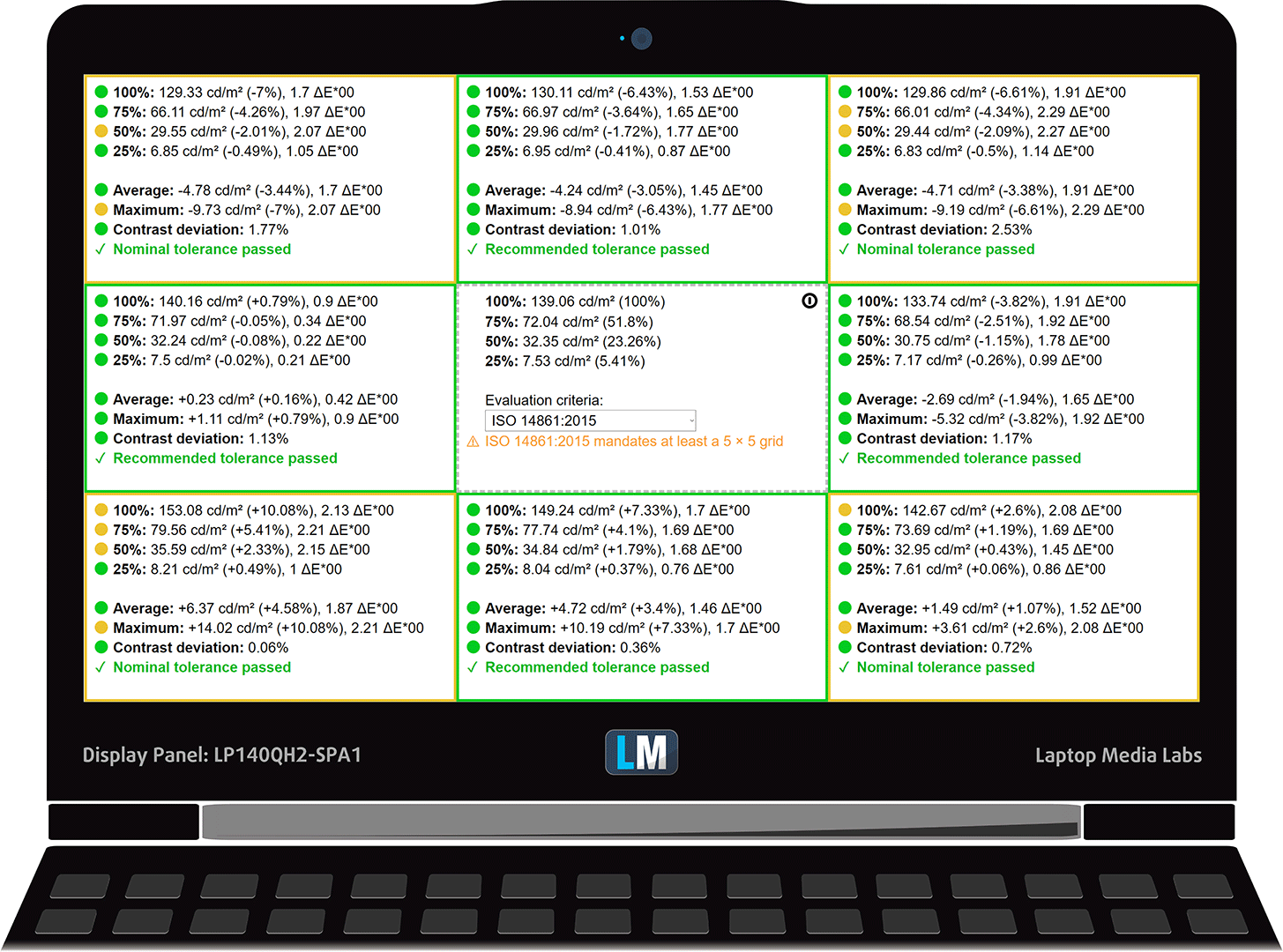
Color reproduction
To make sure we are on the same page, we would like to give you a little introduction of the sRGB color gamut and the Adobe RGB. To start, there’s the CIE 1976 Uniform Chromaticity Diagram that represents the visible specter of colors by the human eye, giving you a better perception of the color gamut coverage and the color accuracy.
Inside the black triangle, you will see the standard color gamut (sRGB) that is being used by millions of people in HDTV and on the web. As for the Adobe RGB, this is used in professional cameras, monitors, etc for printing. Basically, colors inside the black triangle are used by everyone and this is the essential part of the color quality and color accuracy of a mainstream notebook.
Still, we’ve included other color spaces like the famous DCI-P3 standard used by movie studios, as well as the digital UHD Rec.2020 standard. Rec.2020, however, is still a thing of the future and it’s difficult for today’s displays to cover that well. We’ve also included the so-called Michael Pointer gamut, or Pointer’s gamut, which represents the colors that naturally occur around us every day.
The yellow dotted line shows Lenovo ThinkPad X1 Yoga 3rd Gen’s color gamut coverage.
Its display covers 98% of the sRGB/ITU-R BT.709 (web/HDTV standard) in CIE1976.

Our “Design and Gaming” profile delivers optimal color temperature (6500K) at 140 cd/m2 luminance and sRGB gamma mode.
We tested the accuracy of the display with 24 commonly used colors like light and dark human skin, blue sky, green grass, orange, etc. You can check out the results at factory condition and also, with the “Design and Gaming” profile.
Below you can compare the scores of Lenovo ThinkPad X1 Yoga 3rd Gen with the default settings (left), and with the “Gaming and Web design” profile (right).


The next figure shows how well the display is able to reproduce really dark parts of an image, which is essential when watching movies or playing games in low ambient light.
The left side of the image represents the display with stock settings, while the right one is with the “Gaming and Web Design” profile activated. On the horizontal axis, you will find the grayscale and on the vertical axis – the luminance of the display. On the two graphs below you can easily check for yourself how your display handles the darkest nuances but keep in mind that this also depends on the settings of your current display, the calibration, the viewing angle, and the surrounding light conditions.
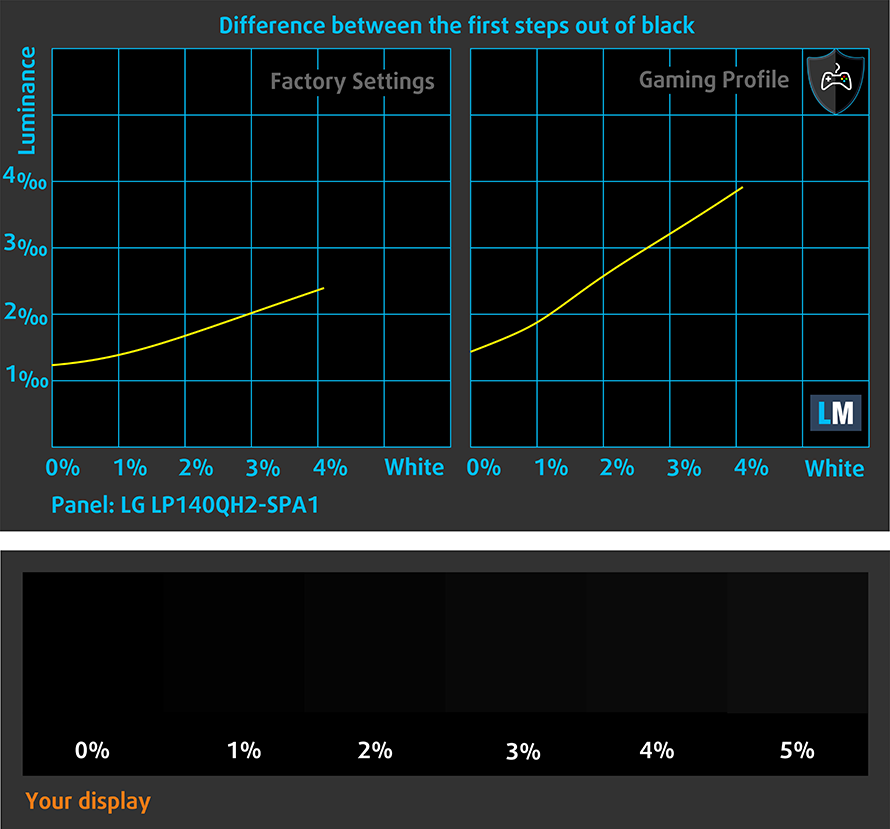
Response time (Gaming capabilities)
We test the reaction time of the pixels with the usual “black-to-white” and “white-to-black” method from 10% to 90% and vice versa.
We recorded Fall Time + Rise Time = 24 ms.
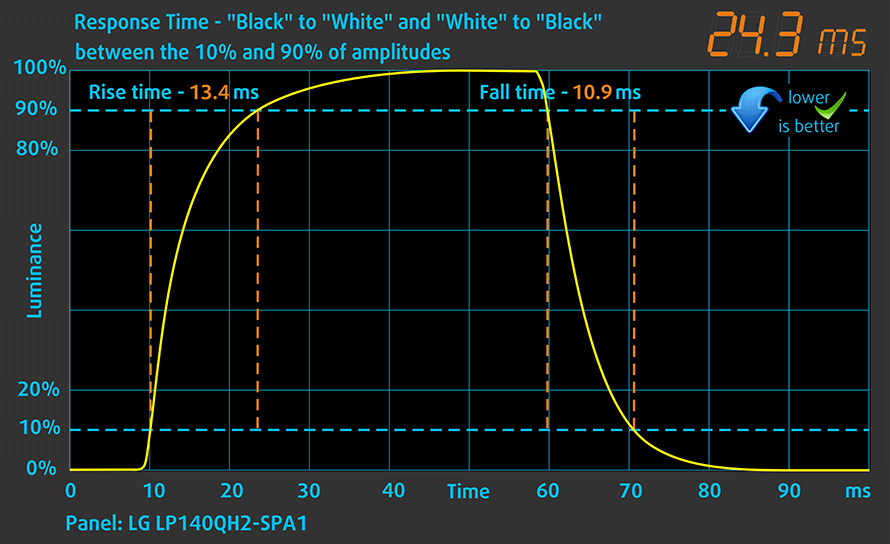
PWM (Screen flickering)
Pulse-width modulation (PWM) is an easy way to control monitor brightness. When you lower the brightness, the light intensity of the backlight is not lowered, but instead turned off and on by the electronics with a frequency indistinguishable to the human eye. In these light impulses, the light/no-light time ratio varies, while brightness remains unchanged, which is harmful to your eyes. You can read more about that in our dedicated article on PWM.
Lenovo ThinkPad X1 Yoga 3rd Gen is free from flickering throughout the entire brightness spectrum. This makes it safe for use during extended periods of time in this aspect.
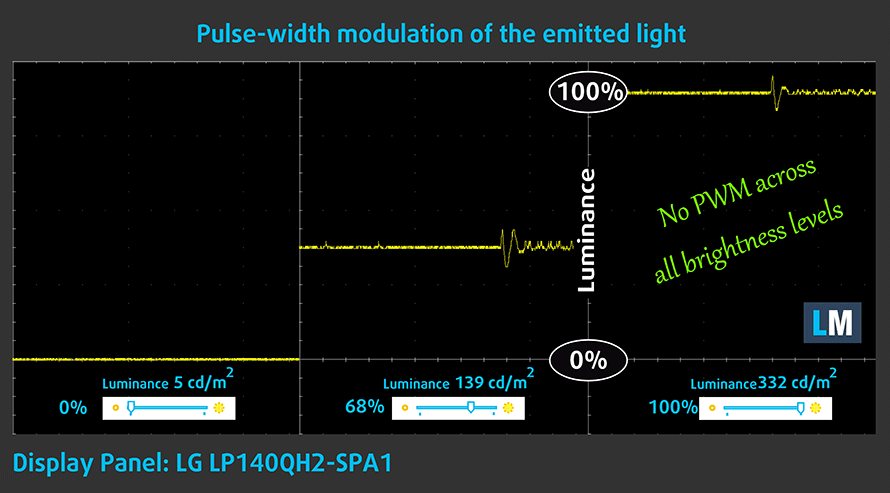
Blue light emissions
Installing our Health-Guard profile not only eliminates PWM but also reduces the harmful Blue Light emissions while keeping the colors of the screen perceptually accurate. If you’re not familiar with the Blue light, the TL;DR version is – emissions that negatively affect your eyes, skin and your whole body. You can find more information about that in our dedicated article on Blue Light.
Conclusion
Expectedly, ThinkPad X1 Yoga 3rd Gen is equipped with a good quality touchscreen panel. It has a high resolution, wide color coverage, and comfortable viewing angles. Another positive about it is the lack of PWM during brightness adjustment. However, its default color settings are a bit off, but with the help of our Gaming and Web design it undergoes a drastic improvement in color accuracy
Buy our profiles
Since our profiles are tailored for each individual display model, this article and its respective profile package are meant for Lenovo ThinkPad X1 Yoga 3rd Gen configurations with 14.0″ LG LP140QH2-SPA1 (WQHD, 2560 × 1440) IPS.
*Should you have problems with downloading the purchased file, try using a different browser to open the link you’ll receive via e-mail. If the download target is a .php file instead of an archive, change the file extension to .zip or contact us at [email protected].
Read more about the profiles HERE.
In addition to receiving efficient and health-friendly profiles, by buying LaptopMedia's products you also support the development of our labs, where we test devices in order to produce the most objective reviews possible.

Office Work
Office Work should be used mostly by users who spend most of the time looking at pieces of text, tables or just surfing. This profile aims to deliver better distinctness and clarity by keeping a flat gamma curve (2.20), native color temperature and perceptually accurate colors.

Design and Gaming
This profile is aimed at designers who work with colors professionally, and for games and movies as well. Design and Gaming takes display panels to their limits, making them as accurate as possible in the sRGB IEC61966-2-1 standard for Web and HDTV, at white point D65.

Health-Guard
Health-Guard eliminates the harmful Pulse-Width Modulation (PWM) and reduces the negative Blue Light which affects our eyes and body. Since it’s custom tailored for every panel, it manages to keep the colors perceptually accurate. Health-Guard simulates paper so the pressure on the eyes is greatly reduced.
Get all 3 profiles with 33% discount
Sound
Lenovo ThinkPad X1 Yoga 3rd Gen produces relatively loud sound from its speakers. While it lacks some punch, it has clear low, mid and high frequencies.
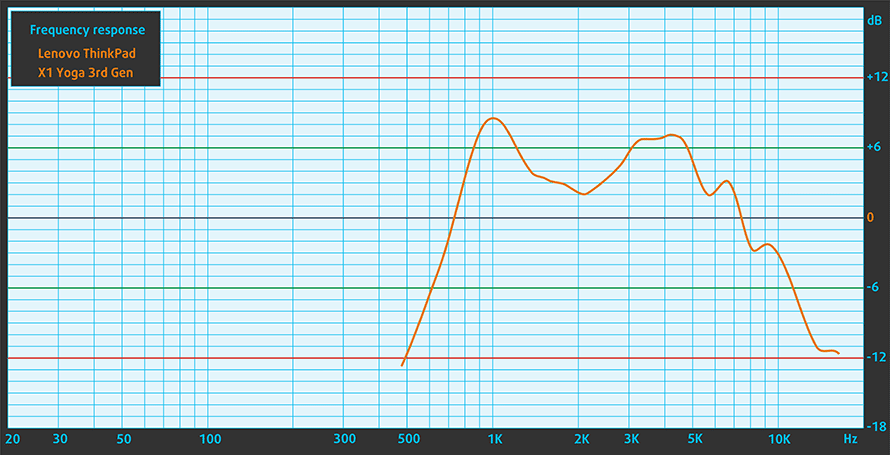
Drivers
You can download every driver and utility you’ll possibly need for the ThinkPad X1 Yoga here: https://pcsupport.lenovo.com/bg/en/products/laptops-and-netbooks/thinkpad-x-series-laptops/thinkpad-x1-yoga-3rd-gen-type-20ld-20le-20lf-20lg/downloads
Battery
Now, we conduct the battery tests with Windows Better performance setting turned on, screen brightness adjusted to 120 nits and all other programs turned off except for the one we are testing the notebook with. This device is equipped with a 54Wh, 4-cell battery pack.
Despite the high pixel count, we were able to extract 10 hours and a half during web browsing and a little over 7 hours during video playback.
In order to simulate real-life conditions, we used our own script for automatic web browsing through over 70 websites.
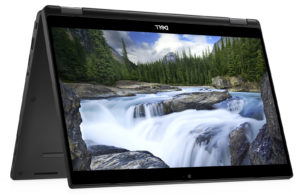
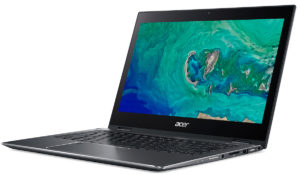
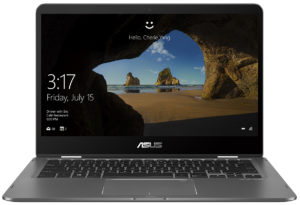
For every test like this, we use the same video in HD.



CPU options
This device is offered with Intel Core i5-8250U, Core i7-8550U and their more secure iterations – the Core i5-8350U and Core i7-8650U. Our unit was equipped with the last one mentioned. It has a slightly higher base and Turbo frequencies – 1.90 GHz and 4.20 GHz respectively.
Results are from the Cinebench 20 CPU test (the higher the score, the better)
Results are from our Photoshop benchmark test (the lower the score, the better)
Results are from the Fritz chess benchmark (the higher the score, the better)
Lenovo ThinkPad X1 Yoga (3rd Gen, 2018) CPU variants
Here you can see an approximate comparison between the CPUs that can be found in the Lenovo ThinkPad X1 Yoga (3rd Gen, 2018) models on the market. This way you can decide for yourself which Lenovo ThinkPad X1 Yoga (3rd Gen, 2018) model is the best bang for your buck.
Note: The chart shows the cheapest different CPU configurations so you should check what the other specifications of these laptops are by clicking on the laptop’s name / CPU.
Results are from the Cinebench 20 CPU test (the higher the score, the better)
Results are from our Photoshop benchmark test (the lower the score, the better)
Results are from the Fritz chess benchmark (the higher the score, the better)
GPU options
Intel UHD Graphics 620 is a refresh of the HD Graphics 620 found as an integrated solution in many ULV Kaby Lake processors. UHD Graphics 620 is codenamed “Kaby Lake R U GT2” and it’s a part of the Gen 9.5 generation.
Intel UHD Graphics 620 has roughly the same performance as HD Graphics 620, depending on the other components in the system. UHD Graphics 620’s performance is similar to AMD Radeon R5 M420X and NVIDIA GeForce 910M/920M.
Results are from the 3DMark: Fire Strike (Graphics) benchmark (higher the score, the better)
Results are from the Unigine Superposition benchmark (higher the score, the better)
Gaming tests
Not bad performance for this device. Despite it is not a gaming laptop, it is particularly important that graphically intensive apps work well in this artist-aimed convertible.

| CS:GO | HD 1080p, Low (Check settings) | HD 1080p, Medium (Check settings) | HD 1080p, MAX (Check settings) |
|---|---|---|---|
| Average FPS | 62 fps | 37 fps | 19 fps |

| DOTA 2 | HD 1080p, Low (Check settings) | HD 1080p, Normal (Check settings) | HD 1080p, High (Check settings) |
|---|---|---|---|
| Average FPS | 91 fps | 42 fps | 20 fps |
Temperatures and comfort
Max CPU load
In this test we use 100% on the CPU cores, monitoring their frequencies and chip temperature. The first column shows a computer’s reaction to a short load (2-10 seconds), the second column simulates a serious task (between 15 and 30 seconds), and the third column is a good indicator of how good the laptop is for long loads such as video rendering.
Average core temperature (base frequency + X); CPU temp.
| Intel Core i7-8650U (15W TDP): | 0:02 – 0:10 sec | 0:15 – 0:30 sec | 10:00 – 15:00 min |
|---|---|---|---|
| Lenovo ThinkPad X1 Yoga 3rd Gen | 2.24 GHz (B+24%) @ 85°C | 1.88 GHz (B+4%) @ 85°C | 1.91 GHz (B+11%) @ 85°C |
| Intel Core i7-8550U (15W TDP): | 0:02 – 0:10 sec | 0:15 – 0:30 sec | 10:00 – 15:00 min |
| Lenovo Yoga 730 | 2.73 GHz (B+52%) @ 85°C | 2.63 GHz (B+46%) @ 97°C | 1.89 GHz (B+5%) @ 71°C |
What we noticed is that the ThinkPad X1 Yoga reached its TJunction point rather quickly. It is at 85C and the firmware is programmed in a way that it changes uses throttling in order to maintain a maximum of that temperature. This results in a poor performance in 3D rendering, while shorter processes – like Photoshop edits and day-to-day tasks are super snappy.
Verdict
The third year in a row, Lenovo is making a great job with delivering what is to be expected from the ThinkPad X1 Yoga. Moreover, they’ve done so without doing any major overhaul of the design – something rarely seen (successfully) on a laptop. Of course – car makers have long been doing this – take the Lada Niva for example. So basically we can say that the ThinkPad X1 Yoga is the Lada Niva of laptops? Feel free to quote us on this one.
Okay, now we should specify why we enjoyed using this laptop, shouldn’t we? Well, the major advantage for us came from its Yoga ancestry. We loved the touchscreen experience, especially with the included pen. Of course, you can get the bigger one, which is a little bit more comfortable for artistic purposes. It is clearly a great laptop for content creation, animation, etc. This is further enhanced by the Thunderbolt support, which enables you to connect an external GPU, making it easier for 3D modeling and rendering.
Furthermore, ThinkPad X1 Yoga is also a very sturdy laptop – this time the ThinkPad ancestry is calling. We should note that the nipple lovers would be pleased (we mean the red thing on the keyboard, you pervert). One more thing is the battery life, which happens to provide 10 hours and a half of web browsing and around 7 hours and a half of video playback.
Sadly, the major disadvantage here is the CPU performance in 3D renders. The cooling just can’t handle longer tasks without dropping the Clock speeds drastically. Additionally, the screen has a rather unimpressive default color accuracy. However, with our Gaming and Web design profile, you’ll be able to get an average dE of just 1.1. This adds up to the otherwise excellent display, which has a WQHD resolution (in our case), 98% coverage of sRGB and no harmful PWM for adjusting the brightness.
We’ve tested another device which might interest you if you are into buying the Lenovo ThinkPad X1 Yoga 3rd Gen. It is the Dell Latitude 7390 2-in-1 – a pricey 13-incher, which is definitely worth checking out.
Pros
- Premium build quality
- Covers 98% of sRGB colors (LG LP140QH2-SPA1)
- Very high color accuracy when Gaming and Web design profile is installed (LG LP140QH2-SPA1)
- Good battery life
- Does not use PWM for brightness adjustment (LG LP140QH2-SPA1)
- Lenovo includes a Pen inside the box, that has a dedicated place inside the body of the laptop
Cons
- CPU performance is not brilliant
- Generous price tag
You can check the prices and configurations in our Specs System: https://laptopmedia.com/series/lenovo-thinkpad-x1-yoga-3rd-gen-2018/
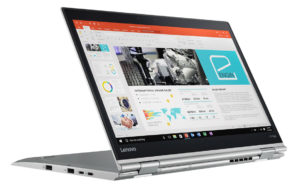
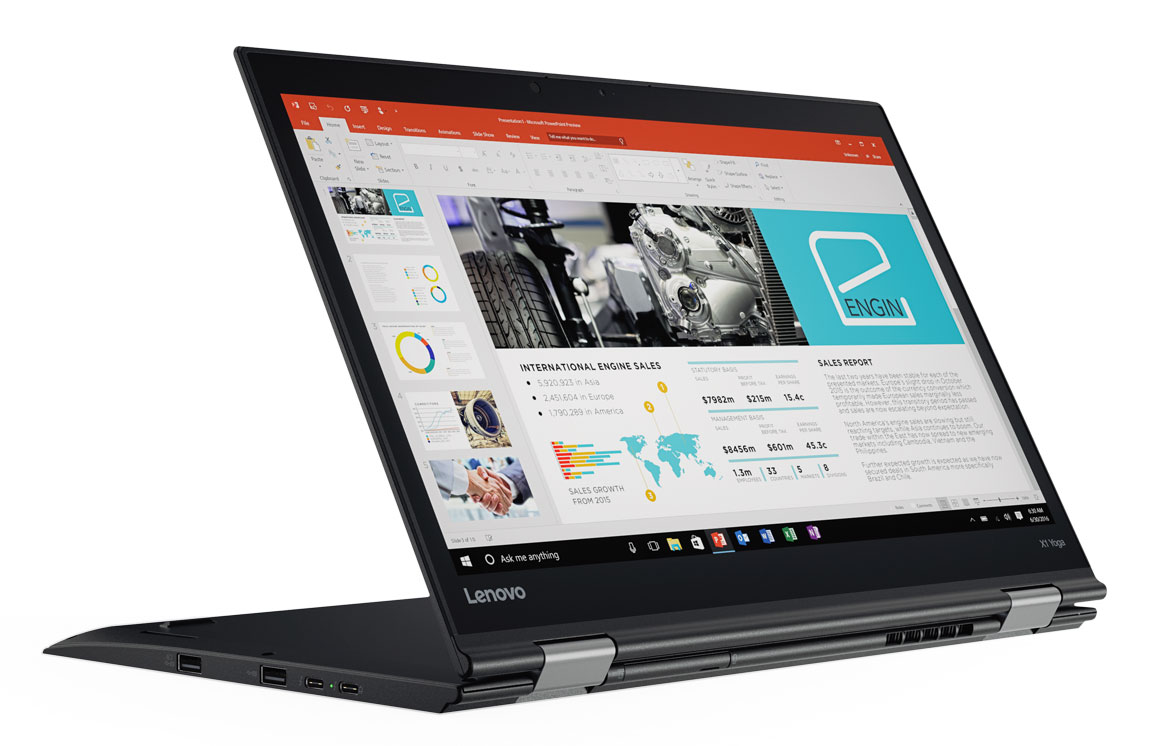
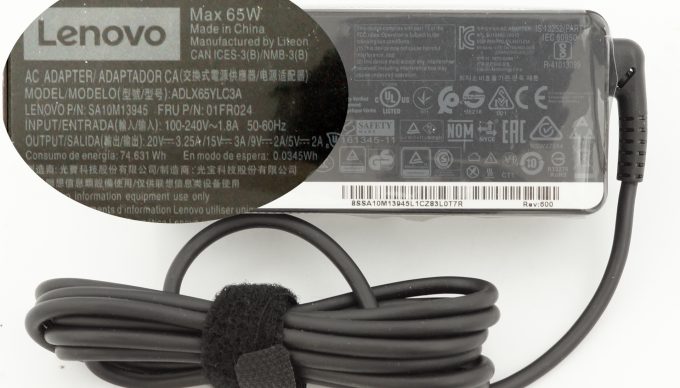

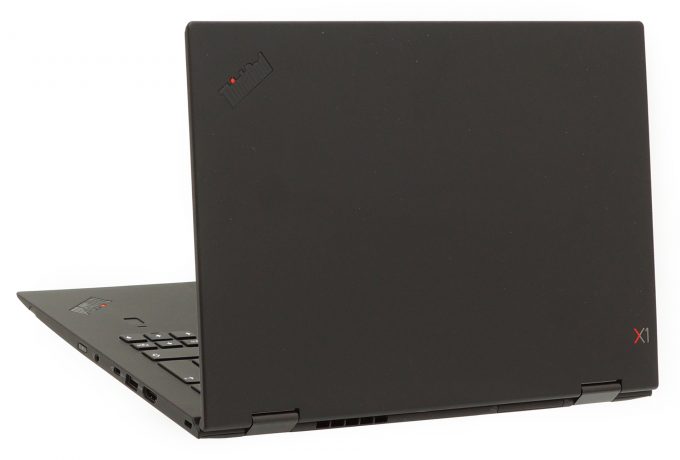
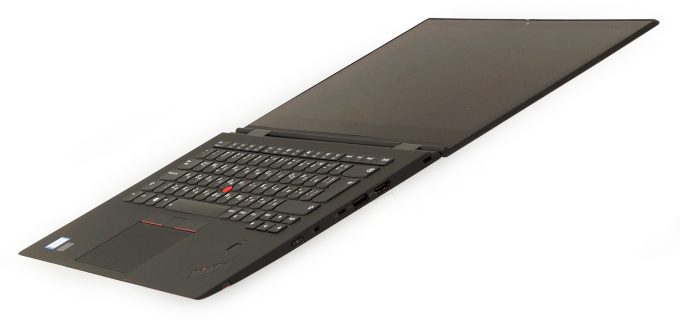

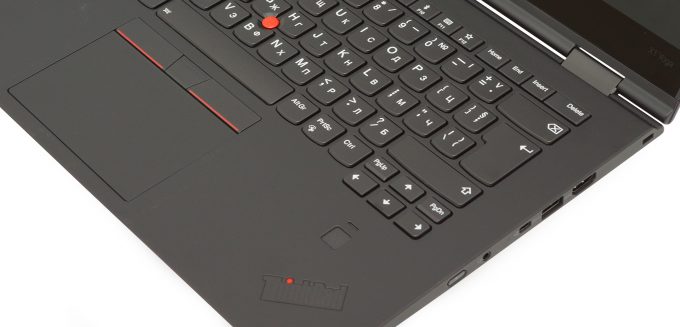

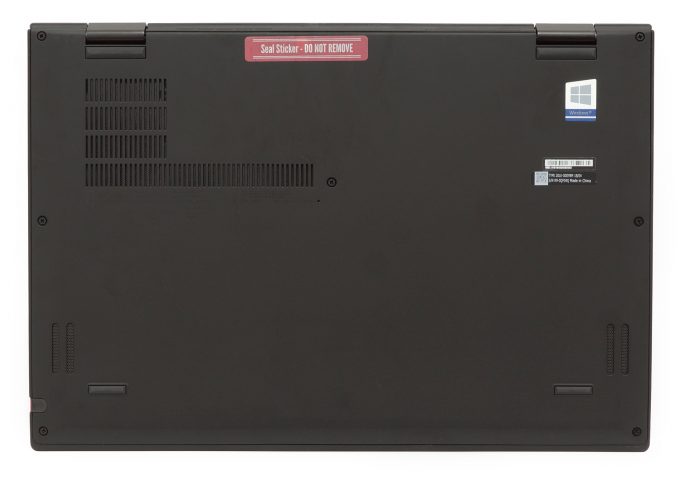



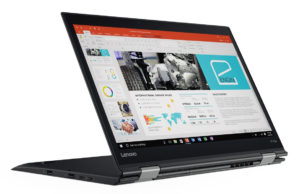








So just to confirm, the model you reviewed has the non-Dolby HDR WQHD 300 nits panel? Which is PWM-free?